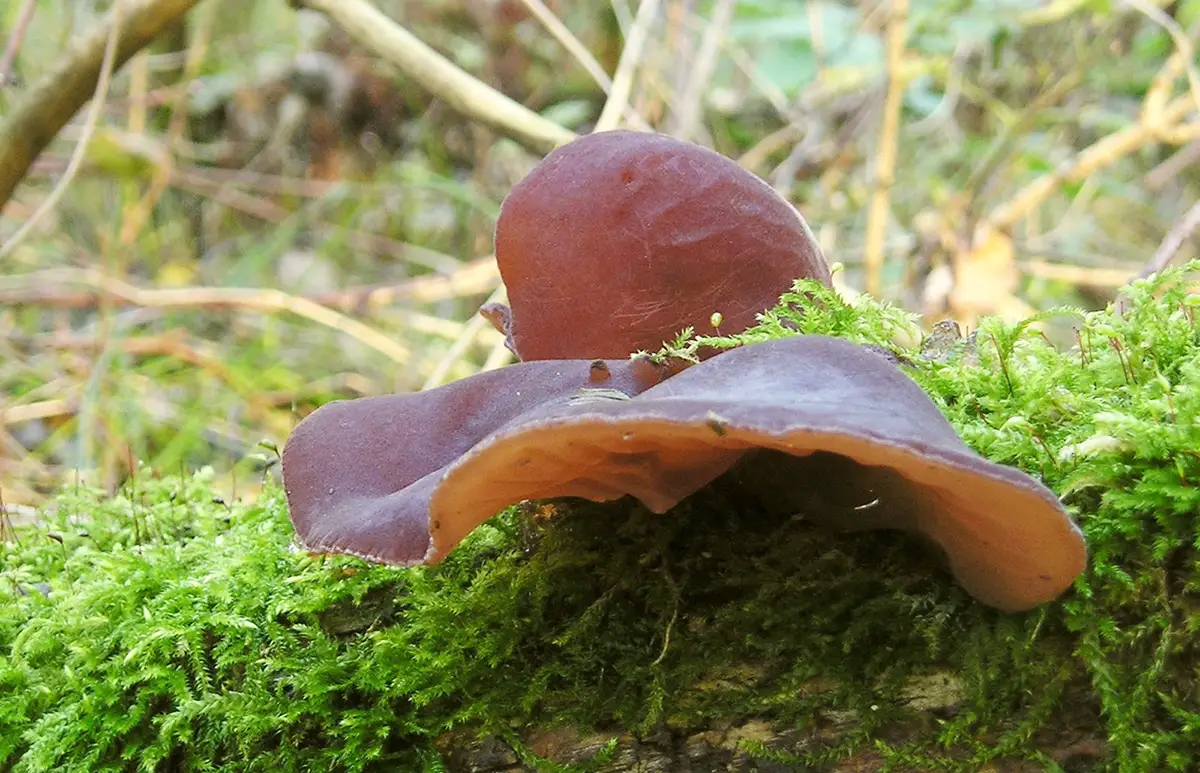
In nature there are so many different shapes and colors that nothing surprises us anymore, right? It could happen to us that, walking through a forest, we do not find an ear attached to a trunk. Don’t worry, it’s not a horror movie. It is the ear fungus. This curious living being draws a lot of attention due to its peculiar shape and, in addition, it is edible!
If you have not yet heard of ear fungus, you are in the right place. In this article we will explain what it is and where to find it. So do not hesitate to continue reading if you are curious.
What is ear fungus?


When we talk about ear fungus, we are not referring to a fungal pathology that affects our ears (although it also exists, of course). It is a fungus that receives the scientific name of Ear-to-ear headphones. Other more common names in Spain are ear of Judas, ear of Jew and ear of wool. Although it is also known in other places as wood ear, Banyi Yun Er Seaweed and bear ears. The Ear-to-ear headphones It belongs to the order Auriculariales and It is an edible basidiomycete fungus.
But why is it called an ear? It receives this curious name due to its appearance, which It is very similar to that of a human ear. This fungus is born in the form of a shell and has a dark brown color. Normally, the inner face is usually somewhat darker than the outer face. To the extent that Ear-to-ear headphones as it grows, it acquires more and more a striking resemblance to an ear due to the irregular folds. The margin is usually wrinkled. As for the sporocarp, also known as the fruiting body, it has a rather gelatinous consistency. It has the ability to dehydrate when the environment is dry, but with moisture it regains its elasticity.
Although it is true that the ear fungus has anti-inflammatory and antibiotic properties, it is used more at a gastronomic level. This member of the Fungi kingdom is edible. In fact, in oriental cuisine it is highly appreciated, which is why it is grown on dead trunks. In fact, in Chinese restaurants they call it “black fungus”. Despite not having much flavor, it is usually consumed raw to garnish salads, since its curious appearance does not go unnoticed. It can also be prepared in soups or fried. When it comes to preserving it, it is usually done dry. If it is then soaked, the ear fungus regains its gelatinous consistency.
What are basidiomycete fungi?
As we have already mentioned before, it is a basidiomycete fungus. What does this mean? Well, it is a division belonging to the kingdom Fungi in which are all those fungi that have basidiospores with which they produce basidia. This includes toxic mushrooms, hallucinogenic mushrooms, edible mushrooms, gelatinous mushrooms, phytopathogenic fungi (those that attack plants) and fungi that cause dandruff and some skin diseases such as pityriasis versicolor.
This division is the best known of the Fungi kingdom and also the most evolved. In it we can find three different clades:
- Agaricomycotina: It contains about 20.000 species. It includes almost all edible mushrooms, the basidiomycete lichens, the jelly fungi, and some small groups of yeasts. This clade includes the ear fungus.
- Pucciniomycotina: It contains around 8400 species. Almost all are dimorphic fungi.
- Ustilaginomycotin: It contains around 1700 species. They are generally parasites of vascular plants and mammals. They are also known as blights.
Where is the ear of Judas located?


Now that we know what the ear fungus is, you may be curious to find out where to find it. It should be said that it normally grows in groups, so its sighting will be easy. Although it is true that it usually appears in humid places in autumn, after the rains, we can also see it from time to time in summer or spring, but much less frequently. It develops on dead branches and trunks. of different trees such as broadleaf and coniferous, some of the most common being the following:
- cork oaks: Also known as cork trees. They are evergreen and native to the western Mediterranean area. See file.
- Bananas: Banana trees are native to Asia and America. Its use is usually mainly ornamental. See file.
- Elsewhere: It is a deciduous shrub native to Asia. Due to its medicinal properties it is used to create infusions. See file.
- Pins: Who does not know the pines? There are many different types of these fast growing trees. See file.
- Ash trees: Capable of reaching twenty meters in height, ash trees are trees with a high ornamental value. See file.
- and gundo maples: It is also known as American maple, which indicates its origin. It is very popular for decorating parks and gardens. See file.
Knowing the appearance, name and location of the ear fungus, I recommend that you look next time you go on an excursion, to see if you see any out there. I also recommend you try it the next time you go to a Chinese restaurant.

One thought on “Ear fungus: What is it and where to find it”